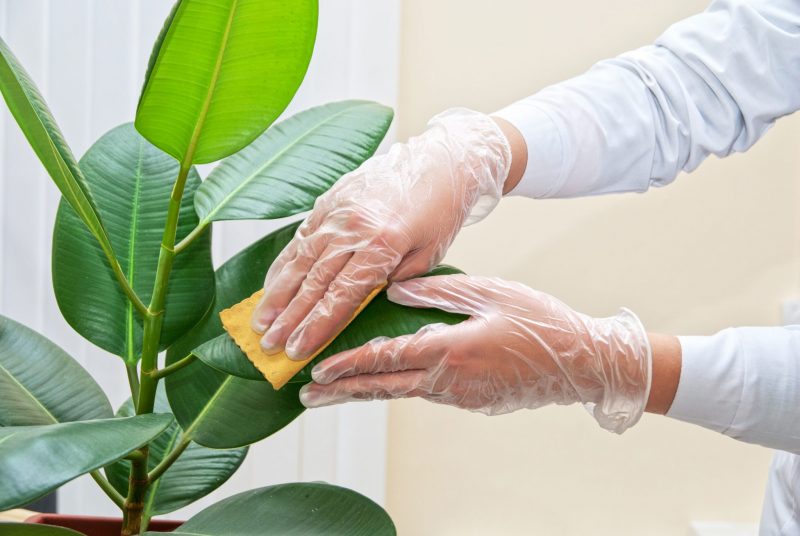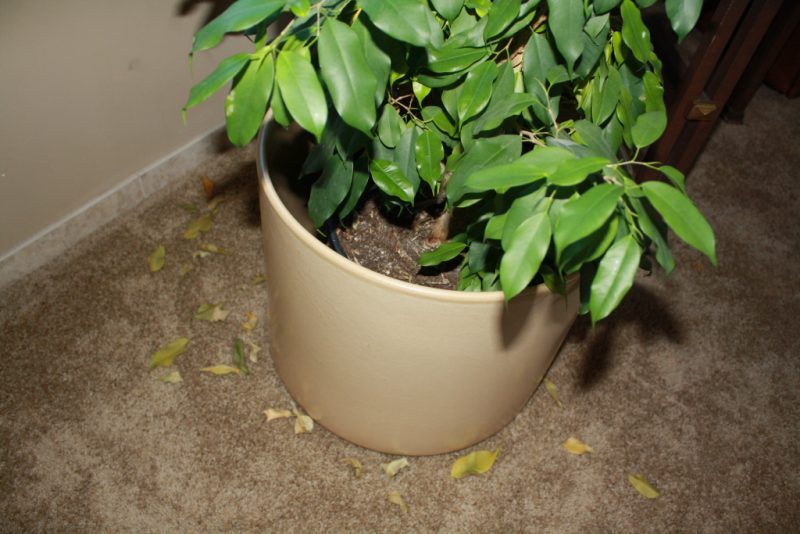This evergreen plant requires a lot of care and attention. In order for a flower to be a decoration at home, you will need to feed it, water it and periodically transplant it. You need to know how to transplant ficus correctly, since the further growth of culture directly depends on this.
Material Content:
Nuances and rules of ficus transplantation
Even a novice amateur grower can cope with a ficus transplant at home. To do this, just remember the features of the selected plant and the main nuances of its life in the apartment.

Important tips:
- Experts recommend replacing ficus in late winter - early spring, since during the cold season, the plant discards foliage and slows growth. The adaptation period in this case may be delayed, or not be successful at all.
- It is not difficult to stop the further growth of the flower - it is enough to plant the ficus in the same pot and periodically prune the shoots.
- When transplanting, it is necessary to study the roots for the presence of parasites or rotted areas. They will need to be carefully removed with a knife or sharp scissors.
- There is no need to transplant the old large ficus. It will be enough to remove the upper earthen layer, replacing it with a fresh substrate.
- For transplanting, it is better to use the transshipment method, leaving a little old land on the rhizome. This will help the ficus adapt faster in the new environment.
Ficus is considered a capricious plant, as from inappropriate conditions it begins to rapidly discard leaves. Often this happens during the period of soil replacement, as the flower is experiencing severe stress.
So that the ficus does not die, you need to transplant according to all the rules.
When a plant needs a transplant
It is recommended to transplant annually if the plant is younger than four years of age. Older cultures worry much less often - once every 2-3 years. A green flower likes to grow in cramped conditions, but occasionally it will be necessary to renew the earth in the pot.

When should a ficus transplant be performed:
- the roots begin to be seen from the lower holes of the pot, filling its entire space;
- the soil dries quickly after watering;
- the root system can also be seen at the top of the tank.
Such signals indicate that the roots of the plant are no longer enough space, and they need a larger pot. Due to cramped conditions, the ficus will receive less nutrients, and this will certainly affect its appearance.
How to choose a pot and soil
To transplant ficus into another pot, you must initially select a container and suitable soil. The substrate is recommended to be purchased ready-made in the store, as it is composed in a suitable proportion and sterilized. If this is not possible, you can prepare the soil yourself.

To transplant a young plant, 1 part of sand, as well as 2 parts of coniferous land and the same amount of peat will be required.
Adult ficus requires the following components in the soil substrate:
- deciduous humus;
- coniferous land;
- peaty soil;
- turf;
- humus.
All ingredients are recommended to be taken in the same amount. Self-prepared soil will also need to be sterilized in the oven for 15-20 minutes. This stage is mandatory, as parasites or other diseases that are dangerous to the house plant may remain in the earthy coma.

The selected pot does not have to be very large. It is enough if its diameter exceeds the size of the previous container by 3-4 cm. At the bottom of the container, good drainage is necessary, which consists of several openings for the release of excess water.
What will be the material of the pot does not play a special role. The main thing is that the container does not exude chemical elements into the root system of the plant. The dishes may be made of clay, glass, ceramic, wood or plastic.
Ficus transplant step by step instructions
Preparatory activities and transplantation:
- The air temperature during the transplant should not exceed 23 degrees. That is, you can transplant ficus not only in the spring, but also in the hot summer.
- It is recommended to water the soil per day so that the roots are easily removed from the pot. It is also necessary to immediately prepare a new tank and soil.
- Gently take the ficus by the trunk and, holding the container, pull out the plant. This must be done carefully so as not to damage the root system.
- Shake off excess earth from the rhizome.
- Set the flower in a new pot with a drainage layer prepared in advance.
- Fill empty spaces with soil, thoroughly crush. The soil should not reach the top by about 1-2 cm.
- Next, the ficus must be watered.
If the plant is very large and heavy, it does not need to be transplanted. It will be enough to replace the topsoil.
Care after replanting a plant
Ficus transplantation is stressful for him, therefore, for the speedy adaptation of a green resident, the florist should carefully look after him. Watering will need to be temporarily limited, it will be enough to spray the plant and soil from the spray gun.
It is interesting:peperomia at home

The pot is recommended to be installed in a well-ventilated place without drafts, avoiding scorching rays. The optimum air temperature is no more than 23-26 degrees. Top dressing should be administered no earlier than a month after the transplant.
Common mistakes
Sometimes an amateur flower grower makes mistakes when transplanting a ficus that lead to the death of the plant in a short time. If all the leaves began to fall off the flower en masse, you need to look for the cause in the wrong actions during the period of transplantation and further care.

Which errors are common:
- changing the location of the pot in the room;
- too much capacity;
- excessive watering or lack of moisture;
- lack of drainage in the pot;
- damage to the roots;
- inappropriate soil composition;
- transplant in winter or hot summer.
Ficus is a very beautiful, but tender plant. If you follow all the rules of transplantation and further care for it, taking into account all the nuances, the green resident will decorate the home and cheer up its owner.












